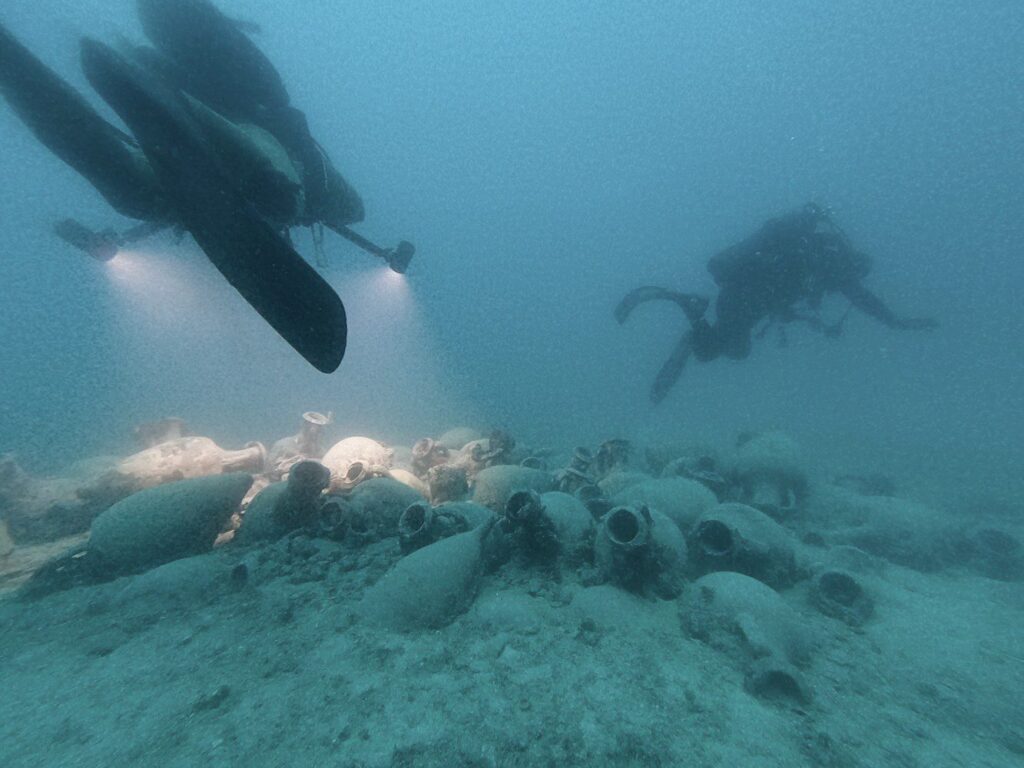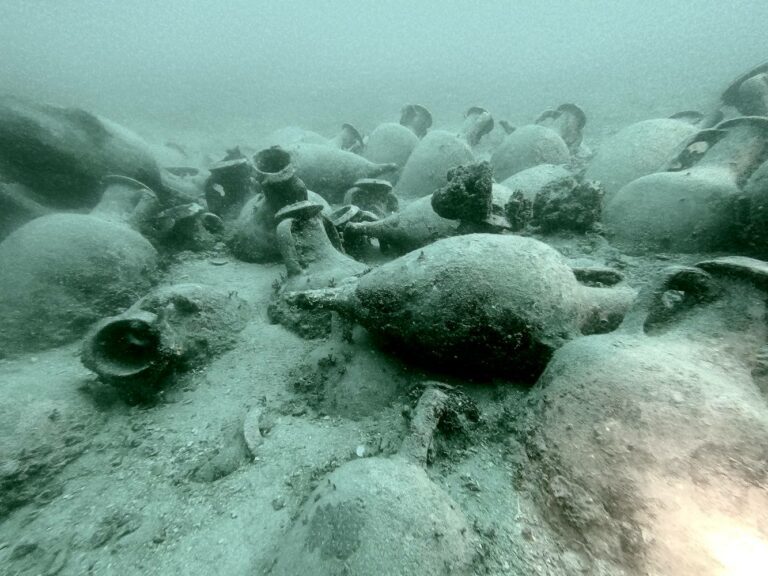One of the earliest fully preserved shipwrecks in the eastern Adriatic has been discovered – as a spin-off from collaborative training exercises between Croatian and Italian naval mine-clearance divers.
Also read: Deep ancient wrecks overflow with glass, pots & lamps
Dating from the 3rd century BC, the wreck complete with its cargo of amphoras was found at a depth of 50m just off the southern coast of Hvar island, reports Croatia’s Ministry of Culture & Media.
The discovery came about as part of a long-standing co-operation that in recent years has seen Croatian divers operating from Italian minehunter vessels in a NATO mine counter-measures group.
The first of two weeks’ joint training had covered mine-clearance procedures using ROVs and AUVs near Čiovo Island, before the naval divers turned their attention to the Šćedra Island archipelago off Hvar during the week of 15-21 June.
The success of the cross-border co-operation had been seen as offering an opportunity to involve other bodies beyond Croatia’s Ministry of Defence, so the Ministry of Culture & Media’s conservation department provided the military with information about existing and potential archaeological sites. Despite adverse weather conditions in the area, a multi-layered seabed-scanning operation was carried out.
Several potential marks were identified, and these were followed up using a sonar- and camera-equipped ROV before scuba diving was carried out by both Croatian and Italian mine-clearance personnel. One of these investigations resulted in finding the previously unsuspected wreck.

Underwater archaeologists Saša Denegri from the culture ministry and Tea Katunarić Kirjakov from the University of Split followed up with further dives to put an approximate date on the buried wreck and confirm that it had been “fully preserved”.
Further archaeological research will now be carried out to determine the extent and characteristics of the site and where the vessel originated, so that plans can be made for its protection and conservation.
Last year an international team of archaeological divers uncovered half of an unusually well-preserved 2,000-year-old Roman ship further north in shallow Adriatic waters near the Croatian village of Sukosan, once the site of the ancient Roman harbour of Barbir, as reported on Divernet.
Also on Divernet: Divers set to lift Bronze Age ‘sewn' boat, Divers uncover Stone Age road in Croatia, Free app samples Adriatic wreck dives, 5 bomber wrecks located, as AI learns to find more


Great story! Love hearing about safeguarding links to the past even though it was the result of a tragedy
Interesting story. Love shipwrecks.